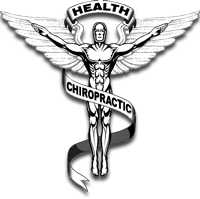Introduction to Orthotropic Remediation and the Importance of Nasal Breathing
[space] If traditional headgear often results in serious and unwanted side-effects, is there a better approach? For the answer, we went to Dr. John Mew, eminent English orthodontist, whose outside-of-the-box thinking has brought relief to countless patients. Per Dr. Mew, all traditional orthodontic-based dental appliances will create a headgear effect. Dr. Mew recommends an orthotropic, or growth guidance, paradigm.Tenets of an orthotropic paradigm:
- The orthotropic objective aims to keep the growth of the maxilla (upper jaw) up and forward vs. down and back.
- Treatment of crooked teeth addresses the symptom rather than the cause, which explains the high rate of relapse in traditional orthodontia.
- Removing teeth actually hinders growth and development.
- Malocclusion is related to vertical growth instead of horizontal development.
- Cases should be initiated by eight years old as the maxilla fixes to the cranium between the ages of eight and nine.
Dr. Mew’s most important goal targets adjustment of the shape of the dental arch to restore a normal pattern of nasal breathing (eliminating mouth breathing).
Nasal breathing reestablishes a more protrusive mandibular (lower jaw) position, optimizing TMJ (temporomandibular joint) position and function. This readjustment works similarly to a cranial manipulation.
What happens during mouth breathing? The mechanics of the obligatory mouth breather are based on the compromise of the airway and associated musculature positioning in and around the mouth. When the mouth is open a significant part of the day and night for breathing, the tongue drops from its natural position inside the maxillary arch. This lingual drop results in a reduction in intraoral pressure, causing the dental arch to collapse inward, down, and back. The arch narrows, the palate elongates vertically, and the maxilla is restricted from expanding anteriorly and laterally. This maxillary restriction tightens sutures in the facial bones and causes tension to transmit through the cranium, resulting in postural changes and additional unwanted compensations throughout the musculoskeletal system.
Balanced breathing is achieved when inhalation and exhalation is performed through the nose with the lips sealed. In this position, the pressure coming from outside the teeth (lips & cheeks) matches the pressure from inside the teeth (tongue) and maintains an appropriate maxillary dental arch.
Coming full circle, it becomes clear that creating an oral environment in which normal nasal breathing is achieved and the ideal dental arch is maintained impacts development of appropriate dental structures, normalizes maxillary and mandibular growth patterns and creates a beautiful functional and aesthetic result—sans headgear!
[space]Read our previous article with information on the causes of the Headgear Effect»
[space]At Wholistic Chiropractic, we are happy to answer your questions. Call and find out what we can do for you.
[space]In Health and Happiness,
Dr. Richard Gerardo
D.C., C.S.C.P., D.A.C.B.N.
[space] [space size=”” line=”yes” style=”solid”]
